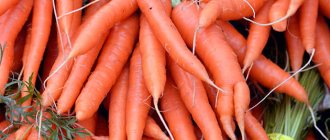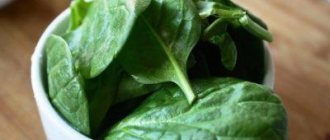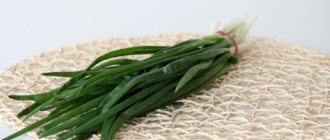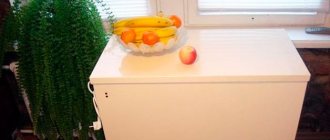One of the secrets of preparing healthy meals, according to nutritionists, is high-quality products that are always on hand. Nowadays, buying fresh produce from fields and gardens is not a problem. Markets and supermarkets offer a variety of agricultural products, the range of which is constantly updated. But you need to know how to store vegetables in the refrigerator correctly, so that even after a week they remain fresh, crispy and juicy, as on the day of purchase.
How to store carrots in the cellar in winter?
It is best to store carrots by covering them with dry sand.
Carrots, despite all their hardness, are a very tender vegetable. Since it does not have a thick skin, it reacts quite negatively to the most minimal temperature fluctuations. The optimal option for storing this root vegetable is a temperature of +1 and almost 90% air humidity in the room.
It is clear that it is almost impossible to create such conditions in the basement where, in addition to carrots, other vegetables will be stored, it would be better if you try to make a kind of protective shell for it.
Carrots can be stored in:
- Sawdust. They will create a layer that will restrain the flow of air to the root crop, and also protect it from cold and temperature fluctuations.
- Pesce. In this case, sand is also used as a layer, but the vegetables are laid in a completely different way. Carrots are placed in rows, forming a pyramid. Each individual row is covered with sand (the layer should be at least 1 cm) and sprinkled with a little water. With this storage method, it is extremely important to ensure that the vegetables do not touch each other.
- Clay. It is diluted with water to the consistency of thick sour cream, and then the root vegetable is dipped into the resulting slurry for a couple of seconds, the protective shell is allowed to dry and the whole thing is placed in a basket or wooden box.
Green vegetables include lettuce, spinach, leeks, celery, etc. These are perishable products that last only for a few days and quickly lose their commercial quality. Due to the large evaporation surface, green vegetables quickly wither. In addition, these vegetables have low mechanical strength and are severely damaged during harvesting and transportation. Immediately after harvesting, green vegetables should be placed in the refrigerator and cooled. The storage temperature of green vegetables is 0...0.5°C, air humidity is 90-98%. They are often topped with crushed ice. The most shelf-stable varieties of head lettuce are Ice Mountain and Berlin yellow.
The use of plastic packaging allows you to extend the shelf life of green vegetables. Lettuce, celery and parsley leaves are stored for up to 3 months in slatted boxes lined with film, in 0.5-1.0 kg plastic bags, sealed tightly. with minor losses. The bags are installed vertically in boxes or small vegetable containers and placed in chambers 4-6 tiers high. When storing green vegetables in plastic bags with a gas mixture, the shelf life increases to 1...2 months.
Green onions are stored in sealed polyethylene bags 30 microns thick at a temperature of 0.5°C. MGS is created inside the package : CO2 - 2.5...3.0 and O2 - 16.6...17.4. The bags are sealed after the onions have cooled to prevent the formation of condensation. In chambers with RGS (CO2 - 3%, O2 - 2% and N2 - 95%), green onions are stored at a temperature of 0.5 ° C and a relative humidity of 90...95% for 75 days. The yield of marketable products is 80 - 90%.
It is good to store parsley and celery in sealed bags made of polyethylene film 100 microns thick, holding 0.5-1.0 kg, with a gas-permeable MDO-AS membrane in the side wall. The shelf life of greens is up to 3 months. An effective technology for storing greens in sealed plastic bags filled with nitrogen . Film thickness 150-200 microns, bag sizes 50x80 cm, product capacity 3-5 kg. Nitrogen is supplied under pressure into bags filled with vegetables and sealed from a cylinder through a hose and a hollow needle. After filling with nitrogen, the bags become elastic.
The puncture site is sealed with adhesive tape. High humidity (about 100%) is created in the packages, as a result the products do not fade. In addition, the composition of the medium is depleted of oxygen (up to 10-12%), as a result, the respiration rate of vegetables decreases. The filled bags are elastic, durable, and the products in them are protected from mechanical damage. In these bags, onions, head lettuce, and parsley are well stored at a temperature of about 2°C for 1.5 months, with virtually no losses. Greens can be packaged in smaller bags (0.5-1.0 kg each) and sold in them.
It is effective to fill the bags not with nitrogen, but with air using a compressor. But in this case, the products are stored for a shorter period .
How to store beets in the cellar for the winter?
Storage conditions for beets for the winter
Sekla categorically does not tolerate heat, so it must be stored at a temperature of no more than +2. If the temperature in the cellar rises above +5, the vegetable will begin to rapidly lose moisture and rot. In view of this, it is best to store beets and carrots in a protective shell.
Storage methods:
- Leaves of rowan, fern and wormwood. Place the beets in a wooden box and arrange them with the prepared leaves. With this storage method, your root vegetables will be protected not only from temperature fluctuations, but also from microflora that causes vegetables to rot. The leaves of these plants will secrete phytoncides all winter, which will kill pathogenic microorganisms.
- Salt. This product creates a protective shell that fights not only temperature, but also moisture. If you don't want to bother, then just sprinkle the beets with salt. But if you want it to last until the next harvest, then prepare a concentrated salt solution, dip the beets in it, wait until they are completely dry, and only then put them in a box.
Where and how best to store fruits
The optimal temperature for storing melon is +5 degrees. The shelf life of melon is 10 days. The melon should be yellow with green sides. Ideally, if there is a mesh on the surface - this means that the melon is tasty.
The shelf life of fruits in the refrigerator depends on their initial “condition”. A little life hack: shake a melon near your ear. A “gurgling” sound means that the melon can be thrown out soon. Eat melon as soon as possible.
Strawberries are stored at a temperature slightly above 0 degrees. The shelf life of strawberries in spring is 2-3 days, in winter – a week.
We recommend placing strawberries in small baskets. Do not use deep dishes - the berries will quickly become unusable.
How to store apples in the cellar in winter?
Apples in paper
- Most often, we put apples in the cellar while they are still greenish, and there they ripen and gain flavor. And since during the ripening process they begin to release a substance, ethylene, which causes all vegetables in the immediate vicinity to begin to germinate, it is better to store them away from the rest of the crop. If you do not have the opportunity to allocate a separate room for apples, then use our tips.
- First, make sure there is good ventilation in the room. This way, almost all the ethylene will be pumped out of the room, and the small part that will remain in it will no longer be able to cause much damage to your harvest.
- Secondly, try to create an airtight package for each apple separately. To do this, take paper (it can even be newspaper) and carefully wrap each fruit with it. Apples prepared in this way can be placed in wooden boxes or cardboard boxes.
Basic principles of storing vegetables
Keeping vegetables fresh is quite a difficult problem. When you buy a quality product and at the same time put it in conditions that are suitable, you risk your health. Products that have deteriorated change their appearance, taste, and can no longer be taken as food. Where fresh vegetables are sold, there should be a table that states sanitary storage requirements.
If food sits for a long time, it begins to rot and mold appears. This is due to mold and fungal microorganisms that the human eye simply cannot see.
The most important rule to keep vegetables fresh, whether they come from the garden or from the store, is to remove dirt. At home, fruits can be stored in different forms: frozen, dried, dried, boiled, stewed, canned.
You should always remember that different vegetables have their own shelf life. It is very important to provide the right conditions under which vegetables will retain their beneficial properties. Vegetables that have not been thermally processed are advantageous in this regard. Important rules that need and are important to remember:
- Store each type of vegetable separately. To do this, the varieties need to be sorted and placed on different sides.
- Before storing vegetables, it is important to remove all low-quality fruits where you can observe the appearance of mold or any damage. If you leave this, then all the other vegetables will begin to spoil and the entire harvest will have to be thrown away.
- If we talk about root vegetables, for example, carrots, radishes, beets, radishes, you must definitely cut off the tops.
- Remember and make it a habit to constantly sort through the fruits. After all, they have a habit of rotting. Review your produce so that you don't end up having to get rid of your entire crop.
- Microorganisms that contribute to the rotting of food are very fond of humidity and heat. These two factors must be prevented. Especially when you want to store vegetables for more than a week.
- Remember that those products that have already been peeled will be stored much less. This is due to the fact that the peel contains many useful microelements that are protective for the vegetable. It is also a mechanical barrier that protects against the rapid appearance of mold and mildew. Leaving the product without a peel, it becomes defenseless and dries out quickly.
Most fruits are 70%, and some are 90% water. It is not recommended to place containers with fruits near radiators and other sources that emit heat.
How to store zucchini for the winter in the cellar?
Zucchini on the rack
Although zucchini is a very delicate product, you can still store it in the cellar for some time. For storage, it is best to choose winter varieties that have thick and hard skin.
Also keep in mind that in order for the zucchini to remain tasty and juicy for as long as possible, it must have a stalk. Therefore, when tearing a vegetable from the stem, be sure to leave the root at least 4 centimeters long.
You can store zucchini in:
- Grids. Take any small stack, put a zucchini in it and hang it from the ceiling. In this position, the vegetable will remain fresh for at least 4 months.
- Seine. Make a wooden rack in the cellar and line it with hay. Place the zucchini on top of it in neat rows, leaving a small distance between them.
Reminder for storing herbs and greens
Greens (parsley and dill)
Where and how to store greens: in the refrigerator. Small bunches can be stored in glasses of water as bouquets (see photo).
Time frame: 5 days.
Shallot onion
Where and how to store shallots: Can be stored in a cupboard or on a countertop, in a pantry or cellar. The main thing is that air circulates freely around it.
Time frame: 1 month.
Spinach
Where and how to store: in the refrigerator.
Tip: No matter what the fresh leaves look like, follow the expiration date on the package as bacteria can develop.
Lettuce salad
Where and how to store: in the refrigerator.
Time frame: 5 days.
Tip: Even if the leaves look fresh, follow the expiration date on the package.
Watercress
Where and how to store: in the refrigerator.
Time frame: 4 days.
Celery
Because celery is porous, it is especially vulnerable to absorbing odors from other foods.
Where and how to store: in the refrigerator.
Time frame: 2 weeks.
Leafy herbs (basil, cilantro, green onions, tarragon, parsley, mint)
Where and how to store greens: in the refrigerator.
Time frame: 3 days (basil, cilantro, green onions, tarragon); 5 days (parsley, mint).
Tip: Wrap a bunch of greens in a damp paper towel before storing to keep them fresh longer.
Woody herbs (rosemary and thyme)
Refrigerator: 2 weeks.
Arugula
Where and how to store: in the refrigerator.
Time frame: 5 days.
Radicchio salad
Where and how to store: in the refrigerator.
Time frame: 4 days.
How to store pumpkin for the winter in the cellar?
Storing pumpkins in the cellar
- Many people believe that pumpkin does not require any special storage conditions, so they simply lay it out on the floor of the cellar. But this vegetable, like zucchini, requires a more tender attitude. If you leave it lying on the floor, then literally in a month you will be able to see that it has begun to deteriorate.
- If you want to prepare healthy pumpkin dishes almost until next summer, then make sure that it has its own separate place in the cellar. The best option for storing pumpkins would be a wooden rack more than a meter high, covered with paper.
- The pumpkin must be placed in such a way that its stalks look up and its sides do not touch each other. If you know that the temperature in your cellar in winter can drop below zero, then additionally fill all the spaces between the pumpkins with straw or hay.
How to store potatoes in the cellar in winter?
Potato storage box
Potatoes, like any other vegetable, react quite strongly to the most minimal changes in temperature and humidity in the room, so it is important to ensure that the cellar in which it will be stored is at least well ventilated. It is best to store this root vegetable at a temperature from +2 to +4 and at 70% humidity.
And if temperature indicators can still fluctuate in one direction or another, then you must monitor the humidity very carefully. If its indicators rise to at least 80%, then your crop will begin to become covered with rot.
It is best to store potatoes in:
- Grids. If you don’t have special boxes for storing potatoes, then the mesh is just what you need. It will allow air to circulate around the tubers all the time, helping to prevent them from getting wet and rotting.
- In bags. If you choose this particular storage method, then give preference to bags made from natural burlap. Unlike paper and polyethylene, they can protect your crop from both dampness and cold.
How to store potatoes in an apartment
The favorite of most families is potatoes. It is eaten most often, bought the most, which means the issue of storage is the most pressing. And this vegetable is quite capricious when it comes to storage. It doesn’t like the light (it turns green), the high temperature is not suitable (it germinates), and excessive humidity is harmful (it rots). What conditions are needed for storing potatoes?
A humidity of approximately 80% and a temperature of about 5°C are considered optimal for long-term preservation of potatoes. You can store tubers in a wooden box with holes for ventilation, in a cardboard box or in a burlap bag. The main thing is that the material does not allow light to pass through, but allows air to pass through. If the holes are too large, the container must be covered from light with any thick cloth. You can install such a box in a closet or on a landing.
If none of these options suits you, potatoes can be stored on an insulated balcony. But to avoid freezing of potatoes in severe frosts, build two boxes. One - the larger one - with holes, the second - the smaller one - make it solid, without holes. Place it inside a larger box. In the gap between them (and it should be about 10 cm on all sides) pour any insulation: foam chips, sawdust or shavings. Fill the bottom and top of the box with the same material. On the eve of severe frosts, wrap the container with potatoes in warm clothes or an old blanket. This layer will create additional thermal protection.
- How to properly store potatoes in a house or apartment
Is it possible to save the potato harvest until spring? Only if you choose a suitable location and microclimate.
How to store cabbage in the cellar in winter?
Cabbage hanging on ropes
If you want to eat your cabbage all winter, then the first thing you must do is grow the right crop. Only late and mid-season varieties are suitable for cellaring. But early cabbage is best pickled and stored in jars.
The best part is that, unlike other vegetables, cabbage is not afraid of maximum humidity and very low temperatures. But still, this vegetable must be stored taking into account its characteristics. It will be better if you put it in the basement so that it does not lie in one heap.
So:
- If you want the cabbage not to lose its juiciness for a long time, then pull it right out by the roots, dry the top leaves a little, and then hang it from the ceiling or beam on a hook, head down. Just make sure that your crop is placed at least 30 centimeters from the wall. If you hang the cabbage closer, there is a chance that it will freeze all the time.
- You can try storing cabbage in cling film. For this storage method, it is best to take heads of cabbage of the same size. They must be cleared of the upper leaves, the stalk must be completely cut off, and then wrapped with film in several layers. Place the harvest prepared in this way in a basket or box and place it on a rack.
Storage of pome fruits
Feed storage
Technological features of the production of compound feeds of various compositions and purposes
Feed crumb mixtures. Bulk feed mixtures are the easiest to prepare. The components, each separately, are cleaned of impurities, peeled, crushed in crushers, measured in the required doses and mixed using special mixers. The resulting product is placed in bags or stored in loose form.
Briquetted feed. The formulation of some of the feed includes chopped hay and straw. The mixture of crushed components is transferred to a special mixer, where it is mixed with molasses dosed in the required amount, supplied in a sprayed state. The resulting well-mixed mass is transferred to briquetting presses. An octagonal briquette is 160-170 mm long, 70-80 mm wide and 30-60 mm thick.
Granulated feed. Granules are small cylinders of a certain diameter and height, obtained by pressing a mass of the prepared product. They have good flowability. Pelleted feeds are produced using dry and wet methods. With the dry method, a homogeneous mixture of technologically prepared components is mixed with a sprayed liquid component (molasses, salt hydrol, fish oil, etc.), after which it is sometimes treated with steam, then pressed, cut into pieces (granules) and cooled. The size of the granules depends on the type and age of the animals, feeding methods (from 2.4 mm to 15.9 mm). During wet granulation, hot water is added to the loose feed, the dough is pressed and kneaded. It is then pressed, cut into granules, dried and cooled.
Compound feeds and components used for their production are stored in bulk and in containers. Kraft bags are the most common type of packaging. Bags made of fabrics and polyethylene films are used. Both loose and granulated feed are stored in containers. Bulk feed cakes much faster and requires incentive devices to release it from the bins. They also exhibit the phenomenon of self-sorting, which sometimes leads to a violation of the homogeneity of the distribution of components. Compound feeds quickly cake when stored in containers. Taking into account the physical properties of compound feeds and their constituent components, as well as the processes occurring in them, when stored in dry warehouses, the recommended embankment height is 2.5...4 m, depending on their humidity, recipe and temperature. Short-term storage of loose and granulated feed is also possible in silos of various sections and heights. However, you need to keep in mind that they easily and quickly cake. Compound feed in containers is also placed in dry warehouses, placing bags in stacks, as is done when storing flour. The height of the rows is no more than 10...12 in the warm season (above 10 °C) and up to 13...14 in the cold.
79.Storage of fruit and melon vegetables
STORING FRUITS IN POLYETHYLENE FILM
The shelf life when using polyethylene film increases by 1.5-2 months. Various volatile (aromatic) substances released by fruits pass through polyethylene. If these substances accumulated during storage, the products would quickly ripen. In this way, it is good to store the varieties Autumn Striped, Pepin Saffron, Lobo, Spartan, Melba, Cortland. It is not recommended to pack the fruits of the Antonovka vulgaris variety in plastic wrap, as in this case they quickly deteriorate.
The storage mode for apples and pears in plastic containers does not differ from usual (temperature 0-3 °C, relative humidity 90-95%). The fruits should be cooled first. To avoid condensation of water vapor in the bag, temperature fluctuations should be insignificant. It is advisable to place bags of fruit in containers or on racks previously covered with paper so that rough boards do not break the seal of the package. The condition of products must be checked regularly.
PLACES FOR FRUIT STORAGE
If there is no special storage for fruits, then a small space can be fenced off in the room near the window. If the room is cold, then the compartment must be additionally insulated; if it is warm, good ventilation must be provided (install a ventilation window or install a household fan). In a very cold room, for example, on a veranda or balcony, fruits should be stored in barrels placed in a box and additionally insulated with sawdust. The sawdust layer should provide an ambient temperature of about 0 °C. The higher the storage temperature, the freer the fruits should be stacked and placed indoors. Using film in warm rooms helps prevent fruits from shrinking and reduces the consumption of nutrients through respiration.
STORING FRUITS IN A GLACIER
The glacier is a cellar deepened into the ground with a vestibule, a compartment for storing products and an ice storage facility. There are three types of glaciers: with bottom, side and top loading of ice. They should be filled once a year at the end of winter.
STORING FRUITS IN CELLARS
The fruits can be stored in earthen cellars. For a deep cellar, you need to dig a pit with sloping walls. Wooden posts should be buried in the ground, tarred and placed on a foundation made of rubble stone or wooden plates. In an above-ground cellar, exposed earthen walls sometimes collapse, requiring annual painting. Therefore, it is advisable to strengthen the walls with some material (wattle fence, slab). Supply and exhaust pipes can be installed in cellars, storage sheds, and pits. You can put barrels with ice-salted mixtures, bring in snow or store it in the spring (filling the cellar) and use it during the most important storage period. Small in-depth cellars made by freezing ice on pre-made formwork are convenient. If well insulated with sawdust and earth, the ice cellar lasts three to four years.
81. Storing green vegetables
Green vegetables include lettuce, spinach, leeks, celery, etc. These are perishable products that last only for a few days and quickly lose their commercial quality. Due to the large evaporation surface, green vegetables quickly wither. In addition, these vegetables have low mechanical strength and are severely damaged during harvesting and transportation. Immediately after harvesting, green vegetables should be placed in the refrigerator and cooled. The storage temperature of green vegetables is 0...0.5°C, air humidity is 90-98%. They are often topped with crushed ice. The most shelf-stable varieties of head lettuce are Ice Mountain and Berlin yellow.
The use of plastic packaging allows you to extend the shelf life of green vegetables. Lettuce, celery and parsley leaves are stored for up to 3 months in slatted boxes lined with film, in 0.5-1.0 kg plastic bags, sealed tightly. with minor losses. The bags are installed vertically in boxes or small vegetable containers and placed in chambers 4-6 tiers high. When storing green vegetables in plastic bags with a gas mixture, the shelf life increases to 1...2 months.
Green onions are stored in sealed polyethylene bags 30 microns thick at a temperature of 0.5°C. MGS is created inside the package : CO2 - 2.5...3.0 and O2 - 16.6...17.4. The bags are sealed after the onions have cooled to prevent the formation of condensation. In chambers with RGS (CO2 - 3%, O2 - 2% and N2 - 95%), green onions are stored at a temperature of 0.5 ° C and a relative humidity of 90...95% for 75 days. The yield of marketable products is 80 - 90%.
It is good to store parsley and celery in sealed bags made of polyethylene film 100 microns thick, holding 0.5-1.0 kg, with a gas-permeable MDO-AS membrane in the side wall. The shelf life of greens is up to 3 months. An effective technology for storing greens in sealed plastic bags filled with nitrogen . Film thickness 150-200 microns, bag sizes 50x80 cm, product capacity 3-5 kg. Nitrogen is supplied under pressure into bags filled with vegetables and sealed from a cylinder through a hose and a hollow needle. After filling with nitrogen, the bags become elastic.
The puncture site is sealed with adhesive tape. High humidity (about 100%) is created in the packages, as a result the products do not fade. In addition, the composition of the medium is depleted of oxygen (up to 10-12%), as a result, the respiration rate of vegetables decreases. The filled bags are elastic, durable, and the products in them are protected from mechanical damage. In these bags, onions, head lettuce, and parsley are well stored at a temperature of about 2°C for 1.5 months, with virtually no losses. Greens can be packaged in smaller bags (0.5-1.0 kg each) and sold in them.
It is effective to fill the bags not with nitrogen, but with air using a compressor. But in this case, the products are stored for a shorter period .
How to store eggplants in the cellar for the winter?
Storing eggplants in the cellar
To keep eggplant fresh all winter, you need to take into account that this vegetable needs high humidity and lack of light. Even in the basement, it is recommended to cover them with burlap so that as little sunlight as possible falls on them. If possible, build a separate rack in the cellar, line it with paper and place the blue ones on it in one row. Cover them with burlap on top and sprinkle with straw.
If there is not enough space in your cellar, then pack them several pieces in plastic bags and put them in a box with holes. Place the box 1 meter above the ground and close to the wall. Check periodically to see if there are any damaged or rotten fruits. If you notice even a small spot, immediately take the eggplant out of the box. If you do not do this, the vegetable will begin to rot and take away moisture from the still normal fruits.
How to properly store vegetables
Let's look in more detail at how to properly store vegetables in the refrigerator . And we'll start with tomatoes. These vegetables are best preserved at 12 degrees Celsius.
Avoid storing green vegetables in the refrigerator - they need to be “ripened” first. Already ripe vegetables can be stored for a week. Before storing in the refrigerator, remove the leaves from the tomatoes. Over time, the leaves become moldy - this will ruin the entire tomato.
We recommend reading: How to preserve greens without refrigeration
You can place the tomatoes in a bag, punch several large holes in the bag, and place a paper towel inside the bag. This way the moisture will have somewhere to go and the vegetable will last longer.
It is recommended to store cucumbers in the refrigerator. Remove all yellow inflorescences - they can cause the vegetable to rot. Wrap each cucumber in a paper towel and place everything in a bag. The package should not be sealed. The shelf life of vegetables is up to 2 weeks.
Peppers “like” the cold. The color of the vegetable affects the storage temperature. Store green peppers at 10 degrees, and riper, orange, red or yellow ones at 7.
Whole hard peppers will keep in the refrigerator for up to 10 days. Red peppers with a green side can be stored for up to 14 days.
Important: before storing peppers, you need to remove all bad inflorescences. From the inflorescence, the pepper can begin to rot and infect its neighbors.
To extend the shelf life of vegetables in the refrigerator , they need to be placed in a bag with holes. Place a paper towel in the bag: it will absorb all the moisture accumulated from the evaporation of the pepper.
How to store watermelons in the cellar?
Storing watermelons in the cellar
- I would like to say right away that it is best to put watermelons grown in your own garden in the cellar for the winter. This way you can independently control the degree of ripeness and cut them off the vines at the right time. In order for the watermelon to last as long as possible, it must be picked up from the garden approximately five days before full ripeness.
- If you store purchased watermelons, then try to choose unripe fruits. The best option for storing watermelon is a net. In this case, you don't have to tinker with anything. All you need to do is remove the soil from the watermelon, wash it, wait until it dries, put it in a net and carefully hang it from the ceiling.
- Another proven option is clay. It will need to be mixed with water and then applied in a thin layer to the watermelon. When the clay layer is completely dry, transfer the watermelons to the rack, and fill all the gaps between them with paper or straw.
How to store turnips in the cellar in winter?
Ways to store turnips in the cellar
Turnip is a unique vegetable in its slim properties, which can very well diversify the winter menu. Turnips should be stored in the same way as carrots and beets. Therefore, you can quite easily place this root vegetable on the same rack with them or in close proximity to them.
For storage, you need to choose juicy, fully ripened fruits that are free from damage and rot. Yes, and if possible, put small-sized turnips in the basement. Since it will disappear very quickly when cut, it will be better if you store fruits that you can eat right away.
Ways to store turnips in the cellar:
- Dry the turnips and place them in a plastic bag. Tie it, and then use any sharp object to make several holes in it for ventilation.
- Place the turnips in rows of wooden boxes and sprinkle them with sand or ash. Make sure that the layer of sand is as thick and dense as possible. After all, if it is very thin, then the vegetables will touch each other during storage and will definitely begin to deteriorate.
- If you wish, you can prepare a glaze from clay, wax or paraffin and coat each turnip with it separately. This storage method will prevent the loss of moisture and protect against putrefactive microflora.
How to prepare vegetables for storage
Before storing vegetables, they must be carefully prepared. Preparing fruits for long-term storage includes the following steps:
- Cleaning . Clean the vegetables removed from the garden from tops, spoiled parts (for example, rotten cabbage leaves) and adhering clods of earth.
- Drying . All vegetables must be thoroughly dried before storage. For some fruits, it is enough to lie for 1-3 days in a dry, well-ventilated area (potatoes, beets, carrots), while others should be kept in similar conditions for several weeks (onions, garlic). Undried vegetables will not store well and will begin to rot.
- Sorting . Before storing, conduct a thorough audit of your inventory. All diseased and rotten vegetables should be thrown away immediately. Fruits with mechanical damage should be consumed first, because... they are poorly stored. Only completely healthy and ripened fruits can be stored for a long time.
How to store pears in the cellar for the winter?
Storing pears at home
- Many gardeners, when putting a pear in the basement for storage, make one mistake. They simply put it in a box, put it on a shelf and forget about it for a certain time. As a rule, such fruits begin to become covered with rot very quickly. Why is this happening?
- Firstly, under no circumstances should you fill the pears. If you do this quickly, then some fruit will probably be damaged, and without noticing this, cover it with normal pears. After some time, it will begin to deteriorate and infect fruits that come into contact with it. Therefore, it will be better if you put the fruits in the box carefully, literally one piece at a time.
- Secondly, pears really do not like high humidity, therefore, everything must be done to ensure that it has the most minimal effect on them. To do this, you need to cover the bottom of the box with several layers of newspaper and only then start laying rows of pears in it. And don’t forget that there cannot be more than three rows of fruit in the box and that each of them must be covered with 2-3 layers of paper.
How to store garlic in the cellar in winter?
Garlic braids
- The easiest way to store garlic has been familiar to us since childhood. Probably each of us remembers the braids made from this aromatic vegetable, which always appeared under the roof of our grandmother’s house at the end of summer. The most interesting thing is that this is how you can keep the garlic juicy and aromatic almost until next summer.
- If you don't want to braid garlic, then you can try storing it in glass jars. In this case, you will need to cut off the herbaceous stem almost at the very base of the head, and then put the vegetable in a jar with salt poured into the bottom. Cover this row of garlic with salt and place a new one on top of it. Continue arranging vegetables in this manner until you fill the entire container.
- Be sure to remember that the last layer should be salt, so if you see that there is no room left for it, then simply do not fill the jar to the neck. When the garlic is laid, all you have to do is wrap the container in a dark cloth and move it to a rack in the cellar.
How to store Chinese cabbage in the cellar?
Beijing cabbage can be stored in a drawer
- Chinese cabbage is a rather delicate vegetable, so it can be stored in the cellar for no more than three months. If during this time you do not have time to eat your harvest, then you will have to put it in jars. It is best to store Beijing on racks with paper. Just keep in mind that in this case you absolutely cannot use newspapers.
- Chinese cabbage absorbs odors so well that in just a couple of weeks it will begin to smell like printing ink. Gardeners who have a large cellar can try to make some kind of garden bed right there and transplant the cabbage into it.
- This method can extend the life of a Pekin cat not by three, but by four months. But no matter how you store it, always remember that it does not like light. Therefore, wherever it is on a rack or in a bed, always cover it with a dark cloth.
Herbs
Fresh herbs don't last long.
But some tricks will help avoid premature fading:
- the greens are carefully sorted before laying,
- fresh grass is washed and dried,
- Clean greens are stored in a vacuum container or a tight bag.
There is an easier way to keep your herbs fresh: place them in a container of water.
Storing Fresh Herbs
You can preserve mint, dill, basil and parsley in 3 ways:
- freeze the grass
- dry,
- pickle.
If the fresh herbs have already withered, water slightly flavored with vinegar will help restore their freshness.
How to store peppers in the cellar?
Storing peppers in the cellar
Bell peppers, unlike other vegetables, feel great in a simple wooden box. Therefore, you can quite easily knock down a box of the required size, cover its bottom with paper and pour pepper into it. If you place vegetables at a height of one meter from the floor, you can store them this way for at least 4 months. If you want the pepper to please you with its piquant taste even in the spring, then dig it out of the soil along with the roots and hang it from the ceiling with the top down.
You can also transplant it into an ordinary flower pot and place it in any convenient place in the cellar. This method is suitable for vegetables that did not have time to ripen outside. Since they will still receive nutrients from the soil, already in the basement they will be able to gain the missing juiciness and even grow a little.
How to store vegetables and fruits: small nuances
When storing vegetables and fruits in the refrigerator, it is important to maintain the correct “neighborhood”. So, you cannot store garlic, pumpkin, onions and potatoes together. Rotting food can be caused by just the wrong neighborhood.
Do not store greens with fruit. They emit ethylene, which causes the greens to turn yellow faster and lose their beneficial properties.
A change in the appearance of a vegetable is an indicator that it has begun to deteriorate. Consume it as soon as possible.
How to store onions for the winter in the cellar?
Storing onions in winter
We can honestly say that onions are the most demanding vegetables. At room temperature it begins to germinate quickly, but at very low temperatures it freezes and becomes inedible.
In view of this, if you decide to store this vegetable in the cellar, then make sure that the temperature in it does not fall below -1, and the humidity is at least 75%. If these indicators are less, the onion will deteriorate very quickly.
You can store onions in:
- Wooden boxes. Their height should not exceed 30 centimeters. If it is larger, the bulbs will rot and rot.
- Containers for eggs. This method is suitable for gardeners with a large cellar. In this case, the onions will need to be carefully placed in the egg wells, and then the containers will need to be placed on shelves.
- Grids. The best option is nets that can literally hold 3 kilograms of onions. But they also cannot be placed on the floor. If you don't have any space left on the shelves, then make additional stands and place nets with vegetables on them.
What vegetables are stored at room temperature?
There are vegetables that can be stored not only in the refrigerator. Everyone can find the following places in the house or apartment in which you can store.
- If you want to store vegetables in the kitchen, then choose a cabinet. The most important thing is that they are at the bottom and not suspended. This is necessary because the temperature below is lower than above, because the steam from cooking rises to the top.
- If you have a closet, then this is the best place for storage. It's dry and dark here, which is perfect for preventing food from spoiling so quickly.
- If there is not much space in the apartment, then you can use any furniture that you have. This could be a closet, a bed, a table.
The temperature at the floor level will be from +20 to +22 degrees. If sunlight and moisture do not reach this place, then you can store the following fruits:
- Zucchini, pumpkin - will be stored for up to three months if you do not cut off the peel.
- Potatoes can be stored in such conditions for up to ten days. If the fruit sits there longer, it will begin to wrinkle and wither.
- Onions and garlic can be stored for one and a half months. The most important thing is to dry their husks.
- Tomatoes will do well at this temperature. And if they are a little late, then it’s absolutely fine. But they will not be stored for long, about a week.
How to store celery in the cellar for the winter?
Methods for storing celery
Celery, like any hard vegetable, loves moisture very much, so it must be stored at almost 100% humidity. If in your cellar its indicators are lower than necessary, then you can try to periodically moisten the vegetable itself. Of course, this doesn't mean you have to spray the celery itself. In order for it to have enough moisture, you will just need to occasionally sprinkle sand in the box in which it will be located.
Just don’t do this very often; if you overdo it with water, the root crop will first begin to take root and grow, and then due to lack of light it will rot. If your cellar has an earthen floor, you can make a small trench in it, put celery in it and cover everything on top with soil and straw.
Processing products before storage
Interesting! Housewives do not have a consensus on whether it is worth washing fruits before putting them in the refrigerator. Some are sure that washing removes most microbes and prevents spoilage of food, while others believe that wet fruits, on the contrary, will rot faster.
Experts recommend sending unwashed vegetables and fruits to the refrigerator, with the exception of greens and fruits that need to be frozen in the freezer. This category of products does not like moisture very much. Therefore, in order to keep them in an edible state for as long as possible, it is necessary to ensure that they are absolutely dry. It is almost impossible to achieve this after washing, which means that even a drop of moisture can lead to the appearance of mold and rot. In addition, during washing, the skin can be damaged, which will facilitate the penetration of microorganisms into the fruit.
You should be concerned about cleanliness if vegetables and fruits were purchased at the market and in small quantities. This will remove excess dirt and assess the condition of the fruit, identifying cracked or bitten specimens. Products purchased in a supermarket are usually of high quality, besides, they have already been washed, and there is no point in repeating this procedure.
Regardless of the option chosen, before sending vegetables and fruits for storage, it is recommended:
- Sort. Spoiled fruits covered with mold, rot, and insect larvae are removed, leaving only whole, undamaged specimens.
- Clear. Remains of soil are removed with a dry rag.
- Lay it down. Delicate and soft fruits are placed separately; contact causes them to deteriorate faster.
- Provide ventilation. To do this, bags of vegetables are placed at a short distance, and several holes are cut in the bags themselves.
Important! Stone fruits, apples, pears, mangoes, avocados, melons, and tomatoes can be stored at room temperature. The exception is cherries, which, like grapes, bananas, citrus fruits, and sweet peppers, are sent to the refrigerator.
How to store Jerusalem artichoke in the cellar?
Jerusalem artichoke storage at home
Jerusalem artichoke, although considered a relative of potatoes, cannot be stored with it. Since it needs high humidity, it is best to put it in the cellar along with carrots and beets. The best option for storing Jerusalem artichoke is a box with soil, only in this case the sand should be used not dry, but wet, and when laying, each layer must be compacted separately.
It is best to place the container with Jerusalem artichoke as close to the exit as possible. Since this vegetable loves the cold (it easily tolerates even -40), this is where it will feel best.
How to store grapes in the cellar?
Methods for storing grapes
If you don’t want to bother, then just cut the grapes and place them on racks on which linden and poplar sawdust are laid out. If you wish, you can replace the rack with a box, but still place no more than one row of grapes in it and be sure to cover it with sawdust on both sides.
You can try preserving your harvest in a more interesting way. Cut the grapes with a small piece of the vine and literally immediately cover the cut with melted paraffin or wax. When it hardens, carefully hang it from a beam or ceiling, making sure that the vine does not come into contact with the forge.











